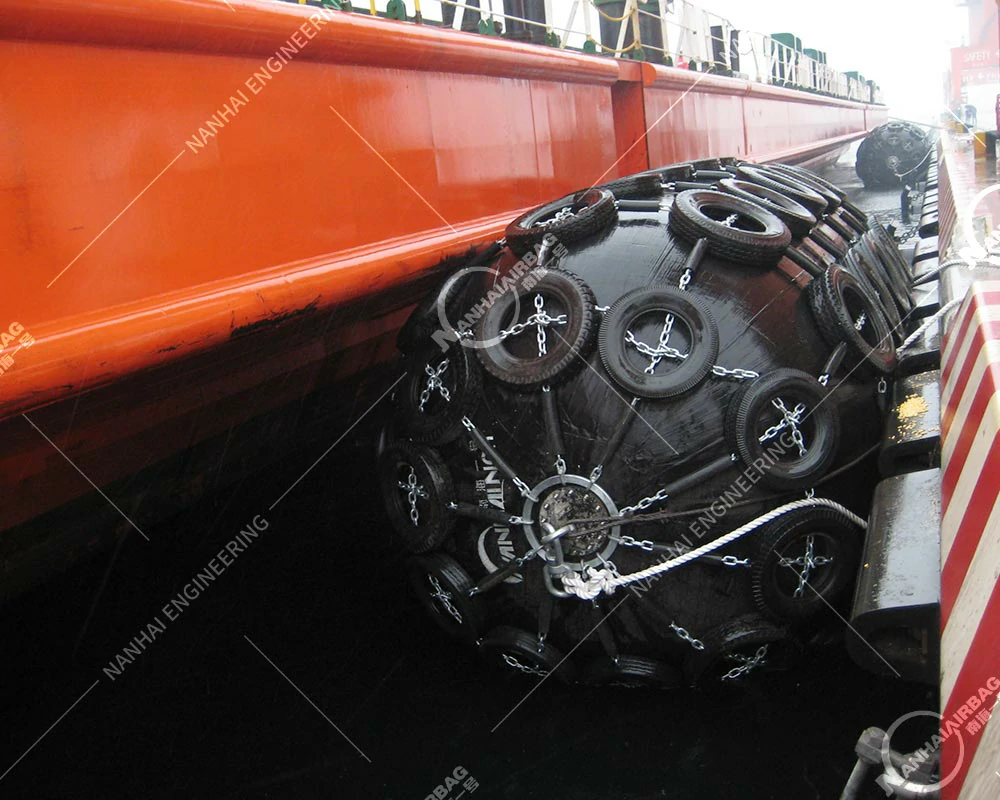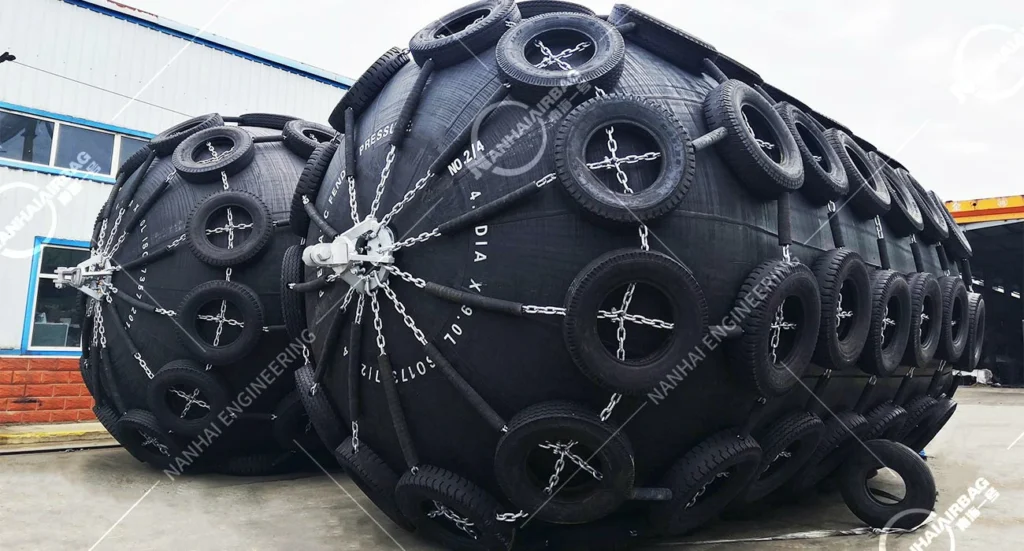Featured Snippet Alert: What Are Foam Filled Fenders?
10/06/2025Ship Launching Airbags: The Game-Changing Tech Keeping Ships (and Budgets) Afloat
17/06/2025

Ever stood on a busy dock, watching a 10,000-ton cargo ship inch toward the pier, and held your breath? That tension isn’t just drama—it’s real risk. When ships collide with docks, piers, or other vessels, the damage can cripple operations, drain budgets, and harm the environment. Enter Yokohama fenders: the marine industry’s go-to solution for softening those blows and keeping ports safe. Let’s dive into why these fenders are a cut above the rest.
🔍 Featured Snippet Alert: What Are Yokohama Fenders?
Yokohama fenders are premium marine fenders designed to absorb and disperse kinetic energy from ship collisions. Made with layers of high-density rubber and reinforced with steel or synthetic cores, they’re engineered to protect vessels, docks, and infrastructure from impacts—even with massive ships. Used globally in ports, marinas, and offshore terminals, Yokohama fenders are synonymous with reliability in tough waterfront conditions.
Why This Matters: When a Single Collision Could Sink Your Bottom Line
Imagine this: A mid-sized cargo ship (5,000 tons) drifts off-course during a storm and slams into an unprotected dock. The result?
- Dock Destruction: Cracked concrete, shattered pilings, and months of repairs costing $200k+.
- Ship Damage: Scraped hulls, bent propellers, or torn cargo holds—repairs could top $500k.
- Environmental Disaster: A ruptured fuel tank spills 5,000 gallons of oil, triggering fines, cleanup costs, and public outrage.
This isn’t a worst-case scenario—it’s reality. In 2021, the Port of Vancouver reported 12 major ship-dock collisions in a single year, with total damages exceeding 12million.Worse,stricterenvironmentallawsnowpenalizeportsupto100k per spill, turning small accidents into financial catastrophes.
Ports and ship operators need Yokohama fenders because:
- Bigger Ships, Bigger Risks: Modern vessels (like 24,000 TEU container ships) carry 3x the cargo of 20-year-old models—their collisions pack 50% more force.
- Busy Waterways: Ports like Singapore handle 1,000+ ships weekly; one accident can shut down a terminal for days, costing millions in lost revenue.
- Reputation Matters: A single collision can tank a port’s safety rating, driving ships to competitors.
Yokohama fenders don’t just reduce damage—they prevent disasters.
💪 How Do Yokohama Fenders Work? The Science Behind the Safety
Yokohama fenders are more than just rubber blobs. Their secret sauce? A multi-layered design that turns chaos into control:
- Outer Rubber Layer: Made from high-quality, UV-resistant rubber (often neoprene or EPDM), it conforms to the ship’s hull, spreading impact across the fender’s surface.
- Reinforced Core: A dense foam or rubber-and-steel core compresses on impact, absorbing kinetic energy like a industrial spring.
- End Caps: Steel or polyurethane caps protect the fender from abrasion and tearing, extending its lifespan.
This combo means Yokohama fenders can handle impacts up to 1,000,000 joules—enough to stop a 10,000-ton ship dead in its tracks without cracking.
Pro Tip: Pair Yokohama fenders with proper fender spacing (usually 1.5–2x the fender’s height) for maximum efficiency.
🌟 Why Yokohama Fenders Beat the Competition
Not all marine fenders are created equal. Here’s why Yokohama stands out from generic marine rubber fenders or cheaper imports:
1. Built for Big Jobs
While small rubber fenders work for kayaks or sailboats, Yokohama fenders are engineered for cargo ships, tankers, and cruise liners. Their reinforced cores handle repeated heavy impacts without deforming—unlike solid rubber fenders, which crack or flatten after a few collisions.
2. Built to Last
Yokohama uses premium materials (like EPDM rubber) that resist saltwater corrosion, UV rays, and ozone. Most last 15–20 years—twice as long as budget fenders.
3. Versatile for Any Dock
Whether you’re protecting a bustling container terminal or a cozy marina slip, Yokohama has options:
- Cylindrical Fenders: Ideal for tight spaces (e.g., between two piers).
- Square Fenders: Perfect for large ships needing broad contact.
- Tugboat Fenders: Reinforced for the rough-and-tumble of tugboat work.
Real-World Win: The Port of Rotterdam swapped generic fenders for Yokohama models and cut repair costs by 70% in 3 years.
🌊 Where Are Yokohama Fenders Used?
- Commercial Ports: Protecting tankers, bulk carriers, and container ships.
- Marinas: Safeguarding yachts, ferries, and fishing boats in crowded slips.
- Offshore Terminals: Absorbing impacts from supply ships in rough seas.
- Military Bases: Shielding naval vessels during docking.
🚢 Top Benefits of Yokohama Fenders (Beyond “They Work”)
- Save Money: Prevent one major collision and avoid 100k+indockrepairs,500k+ in ship fixes, and $100k+ in environmental fines.
- Eco-Friendly: Cut spill risks by 95%, protecting marine life and avoiding costly cleanups.
- Low Maintenance: Just rinse with fresh water twice a year—no rust, no rot, no headaches.
🔍 People Also Ask (Related Questions)
- “Are Yokohama fenders better than regular marine rubber fenders?”
Yes—for large ships and heavy use. Yokohama’s reinforced cores and premium rubber handle bigger impacts and last longer than standard rubber fenders, which are better for small boats. - “How do I choose the right Yokohama fender size?”
Match it to your ship’s size and speed. For a 500-ton boat, a 24-inch cylindrical fender works. For a 10,000-ton ship, go for 48-inch square fenders. Our engineers can help with custom calculations. - “Do Yokohama fenders work in icy water?”
Absolutely. Their rubber compounds stay flexible in subzero temps, and the reinforced cores resist ice damage—perfect for Arctic or winter ports. - “Can I install Yokohama fenders myself?”
We don’t recommend it. Proper spacing, angle (45–60 degrees), and alignment are critical for maximum protection. Our team handles installation nationwide. - “Are Yokohama fenders worth the cost?”
Definitely. The average port recoups the investment in 2–3 years by avoiding just one collision.
🛠️ Ready to Protect Your Dock (and Your Bottom Line)?
Yokohama fenders aren’t just another marine product—they’re a safety net for your port, your ships, and your reputation. Whether you’re managing a busy terminal or a small marina, these fenders turn “what ifs” into “it’s handled.”
Need help picking the right model? Our marine experts have 20+ years of experience—we’ll size, install, and maintain your fenders so you can focus on what matters.
